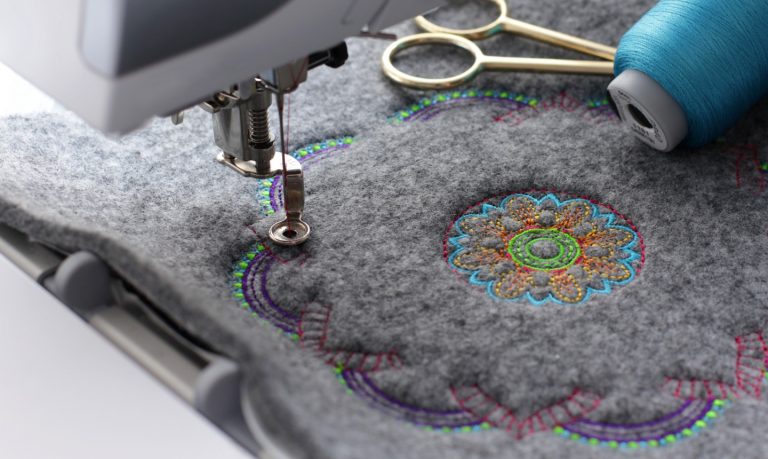Streamlining the Art of Needlework Digitizing: Step-by-Step Overview
As modern technology continues to breakthrough, the digitization process has ended up being extra accessible, permitting fanatics to bring their complex designs to life with simplicity. In this guide, we will unwind the complexities of needlework digitizing, damaging down each action systematically to improve the process and empower both novices and seasoned embroiderers alike.
Comprehending Needlework Digitizing Software
Embroidery digitizing software application acts as a critical tool for transforming elaborate styles right into electronic styles suitable with needlework equipments, facilitating accurate sewing and modification. This specialized software application permits customers to import numerous image data styles, such as JPG or PNG, and transform them right into needlework machine-readable styles like DST, EXP, or PES - Digitizing for Embroidery. By using attributes like stitch editing, underlay choices, and string color choice, digitizing software application allows customers to manage every aspect of the design process
Additionally, advanced embroidery digitizing software application provides devices for creating complex styles, changing stitch density, and integrating intricate details. Users can also sneak peek the style before stitching it out, ensuring accuracy and lessening mistakes. In addition, several software application programs supply automated features that help streamline the digitizing procedure, saving time and effort.
Understanding the capabilities of needlework digitizing software program is necessary for achieving premium cause embroidery tasks. By understanding this tool, needlework lovers and professionals can unleash their creative thinking and bring complex styles to life with accuracy and performance.

Picking the Right Design File
After acquainting on your own with the capacities of needlework digitizing software application, the next important action in the procedure is selecting the right design documents for your job. Digitizing for Embroidery. When selecting a layout documents for needlework digitizing, it's important to consider the intricacy of the layout, the size of the end product, and the sort of fabric you will certainly be collaborating with
For detailed layouts with great information, a high-resolution picture or vector file is recommended to ensure that the embroidery maker can precisely reproduce the design. In addition, the size of the end product plays a considerable duty in picking the best layout data. Larger layouts might need higher resolution files to keep clarity and sharpness.
Moreover, the kind of textile you will be stitching on affects the option of layout file. Different textiles might require modifications in the layout file to make sure that the stitches are effectively aligned and the style shows up as meant. By very carefully selecting the appropriate design data based upon these aspects, you can establish on your own up for an effective embroidery digitizing process.
Digitizing Devices and Techniques
Making use of specialized software application and accuracy strategies, digitizing devices are vital in changing detailed designs right into embroidery-ready files. Embroidery digitizing software, such as Wilcom, Hatch, or Embrilliance, offers the needed system to transform artwork into stitch information. These programs offer functions like stitch editing and enhancing, padding alternatives, and lettering tools to guarantee the style equates seamlessly onto material.
One of the crucial strategies in here are the findings digitizing is developing a clear course for the needlework maker to comply with. This includes digitizing each aspect of the style with precision, identifying stitch types, densities, and instructions. By utilizing tools like digitizing tablets or software-specific plugins, embroiderers can attain a high degree of accuracy in their digitized designs.
Moreover, mastering the art of padding sewing is critical for generating quality embroidery. Underlay sewing stabilizes the fabric and develops a structure for the design, ensuring that the last product is both aesthetically attractive and resilient. By comprehending these digitizing tools and strategies, embroiderers can raise their craft and bring intricate styles to life with precision and performance.
Personalizing Stitch Types and Instructions
Having actually developed a foundation in digitizing devices and methods, a vital aspect ahead of time embroidery craftsmanship lies in tailoring stitch types and instructions with precision and purpose. The option of stitch types can substantially impact the total appearance and appearance of the embroidered layout. Satin stitches, understood for their smooth and shiny coating, job well for developing borders and message. On the other hand, fill stitches are suitable for covering larger locations effectively. By purposefully integrating these stitch kinds, embroiderers can accomplish depth and measurement in their designs.
Moreover, the direction of stitches plays a vital function in improving the aesthetic appeal of the about his final embroidery. By experimenting with different stitch angles and patterns, embroiderers can bring their designs to life with remarkable information and ins and out.
Screening and Refining Your Digitized Style
To make certain the accuracy and top quality of your digitized style, extensive testing and refinement are important action in the needlework digitizing procedure. As soon as you have completed the digitization of your design, it is essential to evaluate it before continuing with the real needlework. Examining allows you to recognize any kind of prospective problems such as thread breaks, sew density troubles, or style distortions that may affect the result.

After testing, it is necessary to refine your digitized layout based upon the comments from the test sew-out. This might include tweaking stitch setups, changing densities, or making adjustments to the overall layout to accomplish the desired end result. By iterating via testing and refinement, you can adjust your digitized style to excellence prior to progressing with the actual needlework process.
Conclusion
Finally, grasping the art of embroidery digitizing requires a thorough linked here understanding of the software, choosing the right layout file, making use of digitizing devices and techniques, personalizing stitch types and instructions, and screening and fine-tuning the digitized layout. By following these actions, embroiderers can simplify the digitizing procedure and create high-quality stitched layouts with accuracy and performance.
Comments on “Top-Rated Digitizing for Embroidery: Perfect Stitch Whenever”